Ford Puma vs Aston Martin DBX – Differences & prices compared
Compare performance, boot space, consumption and price in one view.
Find out now: which car is the better choice for you – Ford Puma or Aston Martin DBX?
The Ford Puma (SUV) comes with a Electric or Petrol MHEV engine and Automatic or Manuel transmission. In comparison, the Aston Martin DBX (SUV) features a Petrol engine with Automatic transmission.
When it comes to boot capacity, the Ford Puma offers 523 L, while the Aston Martin DBX provides 491 L – depending on how much space you need. If you’re looking for more power, decide whether the 168 HP of the Ford Puma or the 707 HP of the Aston Martin DBX suits your needs better.
In terms of consumption, the values are 13.10 kWh5.40 L per 100 km for the Ford Puma, and 14.20 L for the Aston Martin DBX.
Price-wise, the Ford Puma starts at 24800 £, while the Aston Martin DBX is available from 204400 £. Compare all the details and find out which model fits your lifestyle best!
Ford Puma
The Ford Puma presents itself as a stylish compact SUV with a distinctive design that combines practicality with a dynamic driving experience. Its sleek lines and sporty aesthetics make it stand out on the road, while the interior offers a comfortable and tech-savvy environment. With an emphasis on efficiency and a smooth drive, the Ford Puma is well-suited for both urban commutes and countryside adventures.
details @ puma.fordpresskits.com
@ puma.fordpresskits.com
 @ puma.fordpresskits.com
@ puma.fordpresskits.com
 @ puma.fordpresskits.com
@ puma.fordpresskits.com
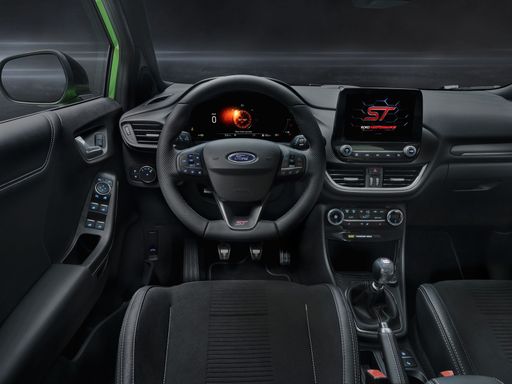 @ puma.fordpresskits.com
@ puma.fordpresskits.com
Aston Martin DBX
The Aston Martin DBX represents the luxury brand's bold foray into the SUV market, combining sporty aesthetics with elegant design. It offers a luxurious interior that envelops passengers in comfort and top-quality materials, delivering an exceptionally refined driving experience. This vehicle seamlessly marries Aston Martin's storied racing heritage with the practical versatility needed for everyday adventures.
details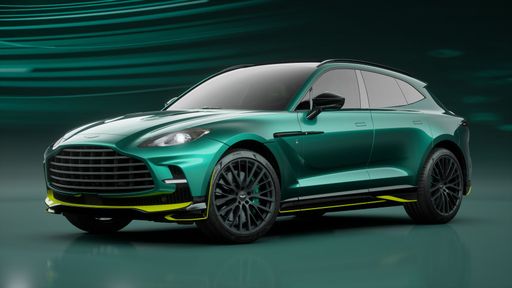 @ media.astonmartin.com
@ media.astonmartin.com
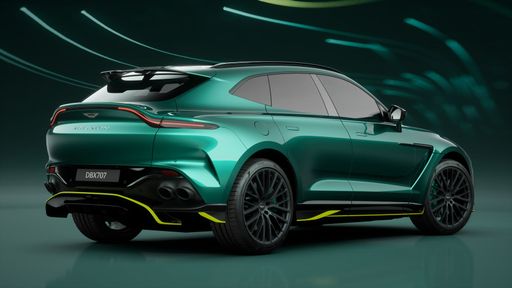 @ media.astonmartin.com
@ media.astonmartin.com
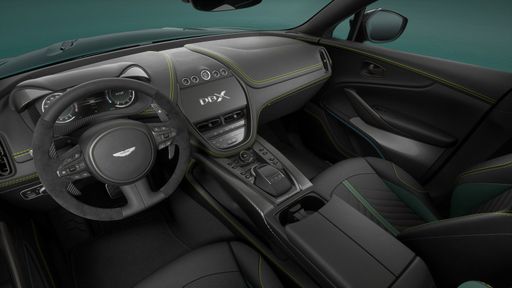 @ media.astonmartin.com
@ media.astonmartin.com
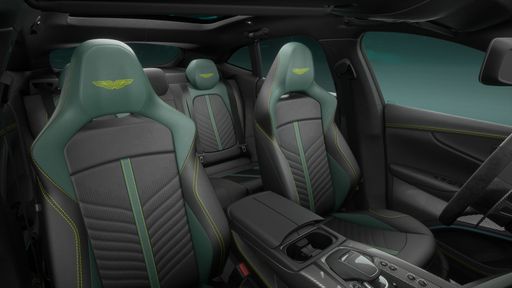 @ media.astonmartin.com
@ media.astonmartin.com

|

|
|
|
|
Costs and Consumption |
|
|---|---|
|
Price
24800 - 36300 £
|
Price
204400 £
|
|
Consumption L/100km
5.4 - 5.9 L
|
Consumption L/100km
14.20 L
|
|
Consumption kWh/100km
13.1 - 13.9 kWh
|
Consumption kWh/100km
-
|
|
Electric Range
361 - 376 km
|
Electric Range
-
|
|
Battery Capacity
43 kWh
|
Battery Capacity
-
|
|
co2
0 - 135 g/km
|
co2
323 g/km
|
|
Fuel tank capacity
42 L
|
Fuel tank capacity
87 L
|
Dimensions and Body |
|
|---|---|
|
Body Type
SUV
|
Body Type
SUV
|
|
Seats
5
|
Seats
5
|
|
Doors
5
|
Doors
5
|
|
Curb weight
1316 - 1563 kg
|
Curb weight
2320 kg
|
|
Trunk capacity
456 - 523 L
|
Trunk capacity
491 L
|
|
Length
4186 - 4226 mm
|
Length
5039 mm
|
|
Width
1805 mm
|
Width
1998 mm
|
|
Height
1550 - 1555 mm
|
Height
1680 mm
|
|
Payload
367 - 469 kg
|
Payload
710 kg
|
Engine and Performance |
|
|---|---|
|
Engine Type
Electric, Petrol MHEV
|
Engine Type
Petrol
|
|
Transmission
Automatic, Manuel
|
Transmission
Automatic
|
|
Transmission Detail
Reduction Gearbox, Manual Gearbox, Dual-Clutch Automatic
|
Transmission Detail
Automatic Gearbox
|
|
Drive Type
Front-Wheel Drive
|
Drive Type
All-Wheel Drive
|
|
Power HP
125 - 168 HP
|
Power HP
707 HP
|
|
Acceleration 0-100km/h
7.4 - 9.8 s
|
Acceleration 0-100km/h
3.30 s
|
|
Max Speed
160 - 210 km/h
|
Max Speed
310 km/h
|
|
Torque
170 - 290 Nm
|
Torque
900 Nm
|
|
Number of Cylinders
3
|
Number of Cylinders
8
|
|
Power kW
92 - 124 kW
|
Power kW
520 kW
|
|
Engine capacity
999 cm3
|
Engine capacity
3982 cm3
|
General |
|
|---|---|
|
Model Year
2025
|
Model Year
2022
|
|
CO2 Efficiency Class
A, D
|
CO2 Efficiency Class
G
|
|
Brand
Ford
|
Brand
Aston Martin
|
Ford Puma
A Glimpse into the Ford Puma: Fusing Style with Innovation
The Ford Puma stands as a testament to modern engineering fused with style. This compact SUV is not just about aesthetics but brings to the table an array of technical innovations, topped with the reliability and performance Ford is known for. Let's delve into the technical specifics and innovative features that make the Ford Puma a stellar choice for any car enthusiast.
Powertrains and Performance
The Ford Puma is offered with a range of powertrains designed to deliver optimal performance whilst minimising fuel consumption. At the heart of this compact SUV is the 1.0 EcoBoost Hybrid engine, available in both 125 PS and 155 PS variants. This engine is a marvel of engineering, optimised to deliver power efficiently with a remarkable fuel consumption ranging from 5.4 to 5.7 L/100km for manual versions, and slightly higher for the automated variants.
The top-end 1.5 EcoBoost ST variant takes performance up a notch, providing a robust 200 PS that propels the Puma from 0 to 100 km/h in just 6.7 seconds. This variant is perfect for those who prioritise performance and exhilaration in their driving experience.
Mild-Hybrid Technology
The Puma's mild-hybrid technology plays a significant role in enhancing fuel efficiency and reducing emissions. By utilising a belt-driven integrated starter/generator, the Puma recovers energy usually lost during braking, storing it in a 48-volt lithium-ion battery. This stored energy is then used to assist the engine, providing a boost during acceleration and smoothing out the stop-start technology, ultimately leading to enhanced fuel efficiency.
Design and Comfort
The Ford Puma does not compromise on style and comfort with its ergonomic and stylish design. The SUV is available in multiple trims including the ST-Line, Titanium, and the luxurious Vignale editions, each offering unique aesthetic and technological enhancements. These trim levels provide varied offerings in terms of both exterior styling and interior comfort, ensuring there's a Puma that meets every personal preference.
Inside, the Puma offers a driver-focused cockpit with advanced technological integrations such as the SYNC 3 infotainment system, providing seamless connectivity and intuitive control of the vehicle's numerous technological features.
Safety and Technology
Safety remains paramount, and the Ford Puma is equipped with the latest security and technology features. It boasts the Ford Co-Pilot360 suite which includes adaptive cruise control, pre-collision assist with autonomous emergency braking, and lane-keeping assist, enabling a safer driving experience on both city roads and highways.
Versatility and Practicality
Beyond performance and safety, the Ford Puma shines in its versatility. With a boot capacity of 456 litres, it offers ample space for all sorts of adventures, whether you're heading on a family trip or loading sports equipment. Its innovative MegaBox is an extra storage solution, providing additional space below the boot floor.
The Puma's agile handling, paired with its compact dimensions—spanning a length of 4186 to 4266 mm and a width of 1805 mm—makes it an ideal choice for urban commuting and beyond.
Conclusion
In conclusion, the Ford Puma beautifully blends practical features with cutting-edge technology, offering a package that appeals to both the tech-savvy driver and those seeking comfort and reliability. Its range of innovative features, powerful yet efficient engine options, and a design that is both functional and stylish make it a frontrunner in the compact SUV market.
Whether you're drawn by the efficient mild-hybrid engines or the robust performance of the ST variant, the Ford Puma represents a modern driving experience where innovation meets everyday usability.
Aston Martin DBX
Discovering the Aston Martin DBX
The Aston Martin DBX marks the iconic brand's foray into the world of luxury SUVs. Born from the prestigious British marque, it combines Aston Martin's rich heritage with modern innovation. The DBX delivers not just style and elegance but also power and performance, distinguishing itself as a significant player in the luxury SUV segment. Let's delve into the details that make the DBX truly remarkable.
Engineering Marvel: The Heart of the DBX
At the core of the Aston Martin DBX is its powerful engine. Customers can choose from engines delivering between 550 PS and 707 PS, all guaranteeing a thrilling driving experience. The V8 engines boast a displacement of 3982 cm3, providing not only raw power but also a symphony for the ears with its distinctive exhaust note. Complementing this, the intelligent all-wheel-drive system ensures optimum traction and control, whether you're cruising on the highway or taking on more challenging terrains.
Performance Meets Efficiency
The performance figures speak for themselves. Acceleration from 0-100 km/h can be achieved in as little as 3.3 seconds, with a top speed of up to 310 km/h. Despite its robust performance, the DBX remains relatively efficient for its class, with a fuel consumption range of 14.2 to 14.3 L/100 km. This blend of performance and efficiency is achieved without compromise, showcasing Aston Martin's engineering prowess.
Luxury and Practicality in Perfect Harmony
As a luxury SUV, the DBX doesn't skimp on style or functionality. Its design is a seamless amalgamation of Aston Martin's luxury sedan attributes with the practicality required from an SUV. With a spacious interior capable of accommodating five passengers comfortably, it also offers a generous boot space of 491 litres. The combination of luxury materials and state-of-the-art technology ensures that no journey in the DBX is ordinary.
Technological Innovations
The technological features equipped in the DBX elevate the driving experience significantly. From the advanced infotainment system to safety technologies, every detail is tailored for both driver and passenger satisfaction. The DBX comes equipped with an automatic transmission system that allows for smoother, more efficient gear changes, enhancing both performance and comfort on the road.
Conclusion: The Aston Martin Legacy Continues
In entering the SUV market, Aston Martin has created a vehicle that remains true to its ethos of luxury, performance, and style. The DBX is more than just an SUV; it is a testament to Aston Martin's ability to innovate and adapt while staying true to its quintessential British charm. Whether you’re drawn to its formidable power or its luxurious appointments, the Aston Martin DBX represents a new chapter in the brand's storied history.
What drivetrain options does the Ford Puma have?
Available configurations include Front-Wheel Drive.
The prices and data displayed are estimates based on German list prices and may vary by country. This information is not legally binding.
